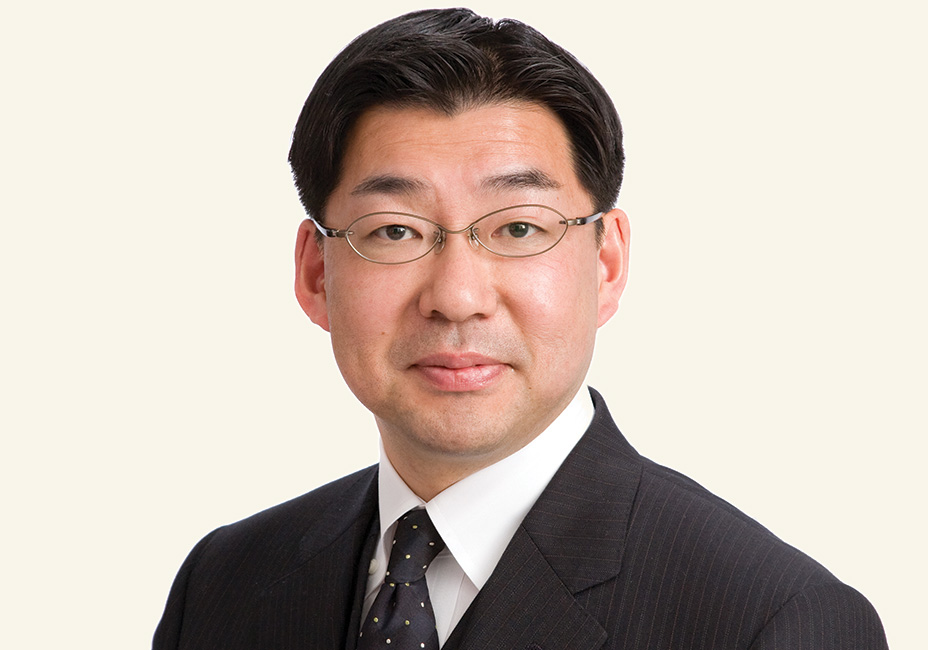Atsuyoshi Fujiwara has been a pastor and scholar in Japan since 1999. Immediately after the March 2011 disaster, he joined volunteers in relief work and believes the Japanese church's rapid response is a key reason why some Japanese are giving Christianity a fresh look.
A professor of theology at Seigakuin University and founding pastor at Covenant of Grace Church in Tokyo, Fujiwara recently published Theology of Culture in a Japanese Context: A Believers' Church Perspective (Wipf and Stock). He is helping to plan the third theological conference at Fuller Seminary to examine the Christian response to Japan's triple disaster. Christianity Today senior editor of global journalism, Timothy C. Morgan, interviewed Fujiwara by e-mail.
You say that Japan has had three separate encounters with Christianity. What went wrong with each of them?
Each period was different. Yet there was a pattern: Christianity came in chaotic periods when Japan lost peace and order.
Sixteenth-century warfare preceded the arrival of Jesuits and the Roman Catholic mission. Then, after 250 years of the Shogunate era, Japan's isolation ended in 1844, and Western missions groups arrived. After World War II, Christian missions increased.
Initially Japan accepted Christianity, yet gradually rejected it when the nation recovered peace, order, and confidence. The Roman Catholic mission was remarkable. We had numerous Christian martyrs. In the latter two periods, Christianity became more success-oriented around the idea that "Japan needs democracy and Christianity to be successful." When Japan became successful without Christianity, it abandoned it.
What occurred after the 2011 disasters that triggered what you call Japan's fourth encounter with Christianity?
After the disaster, churches and organizations naturally worked together beyond denominational walls to deliver foods and supplies. We realized that we were "Christians" to 99 percent of the Japanese people.
Before the disaster, Japanese churches had been isolated from society without participating in regional festivals and activities, which were often connected to Shintoism and Buddhism. The churches were trying to be "pure." Yet after the disasters, they came to be strongly involved in relief works while keeping a pure motivation of helping people. People saw the genuine motivation of Christian volunteers. Now churches are trusted.
What would authentic Christianity in Japan look like?
It would be prophetic and priestly. This is applicable to any society. In Japan, it should challenge Japanese nationalism and the part of culture that tries to be independent from God and refuses to confess that Jesus Christ is the Lord. Authentic Christianity also loves and embraces Japan despite its fallenness. It forms healthy culture by transforming it and producing alternatives.
What aspects of Japanese culture resonate most deeply with the Bible's "God so loved the world" message?
Suffering is a key area in Japanese culture—though by no means exclusively Japanese. In 1946, the late Japanese theologian Kazoh Kitamori published an important book, The Theology of the Pain of God.
In the 1960s, theologian Paul Tillich said that substitutionary atonement did not make sense to many Americans. But the Japanese can still understand it. Parents still make sacrifices for children today. The suffering of God for and with us is a great message for the Japanese.
Is Japan as secularized as recent surveys show—just one in five adult Japanese view themselves as religious?
Japanese people are more religious than you might think. They do not go to particular temples or churches of religious organizations on a regular basis. Yet they have a sense of transcendence and spirituality that is not directly connected to traditional religion.
What evidence is there that public perceptions about Christianity in Japan are changing at the national level?
Perhaps not changing on the national level, but in the northern part of Japan, where the earthquake and tsunami hit, the church now has a stronger presence in society.
People trust the church through its good work. Buddhist monks now show respect to pastors who have strong Christian convictions and suffered together with them in helping people in the town.
Can you explain your vision for a "believers' church" in Japan?
The believers' church is a distinctively Christian community that plays an essential role in transforming culture.
The first Christian churches were basically believers' churches until the fourth century, when Christianity became a state religion. It is difficult for a state church (as in Europe) or even for the denominational churches of a dominantly Christian country (like the United States) to challenge the prevailing culture prophetically. They rather tend to be priestly and ask for blessing from God, e.g., "God bless America."
The believers' church that I advocate seeks to stand on the boundary between the kingdom of God and the surrounding culture. It is prophetic and priestly to your country and culture. In Japan, although Christianity has always been in a minority, the church wanted to become like the church in Europe or in America, with prestige and influence.
Yet you need an independent standpoint if you want to discern the sins of the world. In order to discern different elements of a culture, you need to have a place to stand to deal with them, and character to nurture your discernment. A believers' church with a clear and distinctive Christian identity can provide these. My theology of culture comes from my doctoral research on H. Richard Niebuhr, John Yoder, and Stanley Hauerwas.
Does Japan's emerging fourth encounter with Christianity shed new light on the gospel for all of us?
Yes, especially on the unity of the church. The possible fourth encounter is still in the budding stage. On one hand, the fourth encounter involves Christian witness to society. On the other, it requires building cooperative and trusting relationships among Christian leaders of different denominations, unity that we did not have before. Protestantism, with sola scriptura and sola fide and the priesthood of every believer, resulted in continual divisions. After the disaster, Japanese church leaders realized that it was stupid to create many different walls within the 1 percent of Japanese Christianity.
In your own church, how do you model the kinds of relationship with nonbelieving Japanese neighbors that you dream about?
We believe that the church first and foremost has to be the church, not a city hall or a community center.
The church is to be an essential community for Christians. We belong to many circles and organizations at the same time. But it is the church that determines our core values and behaviors. We try to be loving and caring as Jesus was. We try to be different from the world. Yet we don't want the church to be isolated from society. We go out of the church. We do good works as citizens, professionals, and students wherever we are located. We also invite people to the church.
The transformation of culture includes affirming some elements of culture and rejecting others. It also involves giving new meaning to other parts of culture (the arts, for example) and producing new alternatives.










